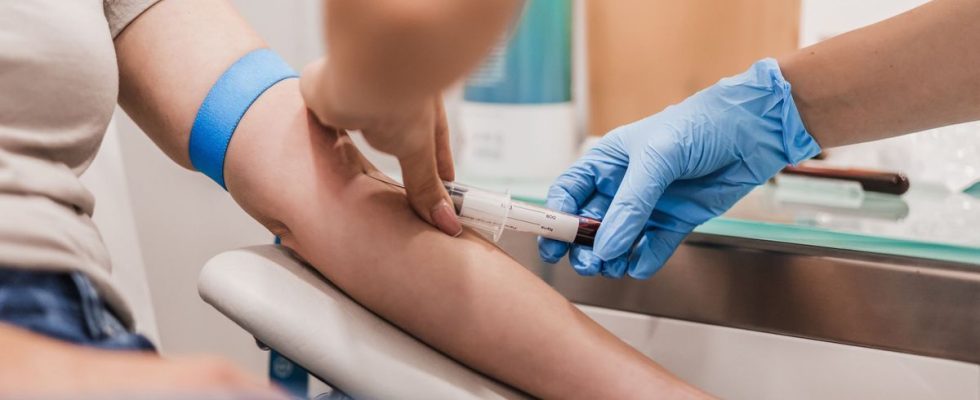Published on
Updated
Reading 3 min.
Who has ever heard of the groups “Bombay” or “Vel Negative”? These are not musical formations but rare blood, whose donors are essential to meet the diversity of needs, which go beyond just groups A, B or O.
Although the blood appears identical, blood groups have many differences depending on the individual and their genetic background.
Beyond the blood groups A, B, AB, or O, and the Rhesus + or – character, there are 390 different other “markers”, called antigens.
Some are common, others a little less. And some can be exceptional, like those called “Bombay” (one person in a million in Europe), “Rhesus zero” (around fifty individuals in the world) or “Vel negative” (1 in 2,500 in France).
“A blood group is said to be rare when it is missing one of the 390 markers present in 99% of the general population.“, explains to AFP Thierry Peyrard, director of the national reference department in immuno-hematology and rare blood at the French Blood Establishment (EFS).
A blood group is considered rare when fewer than 4 people out of 1,000 have it.
18,000 donors with rare groups
How is this rarity explained? The specificity of a blood group for a given geographical region is the result of human adaptation to its environment, which has shaped its genetic characteristics over the centuries.
In Africa, the cradle of humanity, genetic diversity is the greatest in the world. Certain blood groups are therefore only present in people of African or Caribbean origin.
In France, between 700,000 and 1 million people carry rare blood, without necessarily knowing it.
We can spot one of these carriers by chance, during a check-up before transfusion or a traditional donation.
In the event of a transfusion, these people must receive blood as close as possible to their own, as an incompatibility could cause their death.
“We need a maximum diversity of donors to be able to ensure the transfusion of all patients“, underlines Thierry Peyrard, as the EFS launches its third week of awareness of rare blood groups on Monday.
A national register of carriers of these groups lists around 18,000 donors in France.
“When time permits, a donor with the same rare blood as a waiting patient can be summoned to collect it for a transfusion.“, explains Thierry Peyrard.
But when it is necessary to “respond quickly to demand”, bags stored in the National Rare Phenotype Blood Bank, located in the Paris region, can be thawed.
Bags exported abroad
“With approximately 8,300 frozen bags, we are fortunate to have the largest and most diversified bank in the world.“, notes Thierry Peyrard. “We are also regularly contacted by our European colleagues or to export blood to the United States, Canada, or even Australia or Japan.“.
The needs are particularly acute for sickle cell anemia, a blood disease which mainly affects people of African or West Indian origin and requires periodic transfusions.
Laëtitia Defoi, 33, from Martinique, has it. For several months, she has been treated by transfusion exchange, a procedure consisting of replacing diseased red blood cells with healthy ones. “Until now, I have always been lucky to find a compatible donor, but every month I fear that there will not be one.“, she tells AFP.
“Without these donors, I would not have been able to be pregnant, breastfeed, or recover from a particularly acute crisis. My life would not be the same“, continues this young mother, who is trying to raise awareness among new donors on her Instagram account.
Additional motivation for donors
Yasser Osman-Ali, 28, is one of them. Urged to donate blood by his father, this Marseillais who has origins in Morocco, the Comoros and Yemen, made the gesture for the first time in 2020.
“I was told that I had rare blood, that it was very sought after, that motivated me even more“, assures the young man, who has become a regular donor. “I would have continued to give anyway, but I feel all the more useful“.
